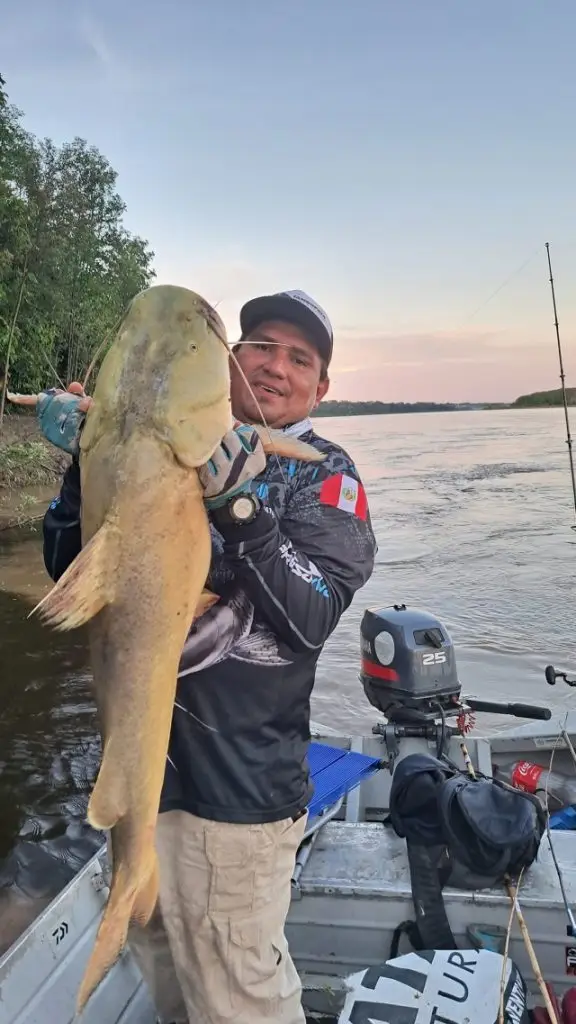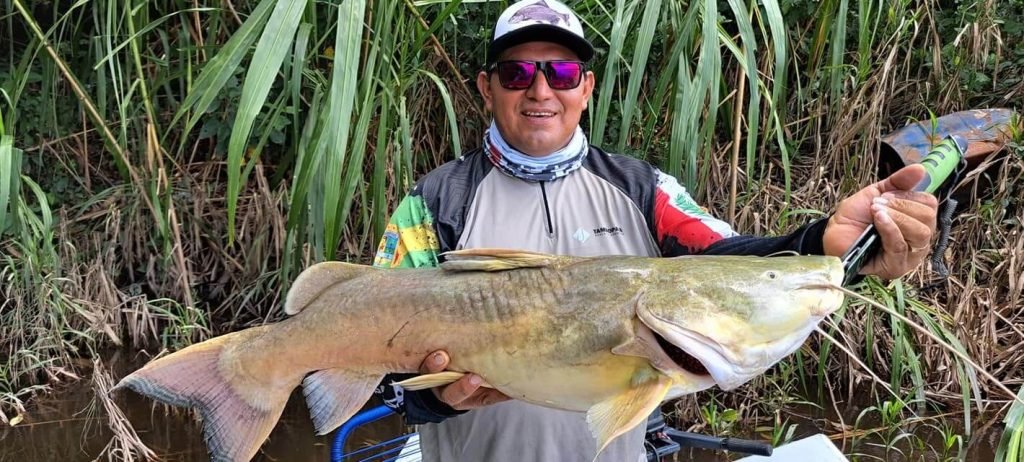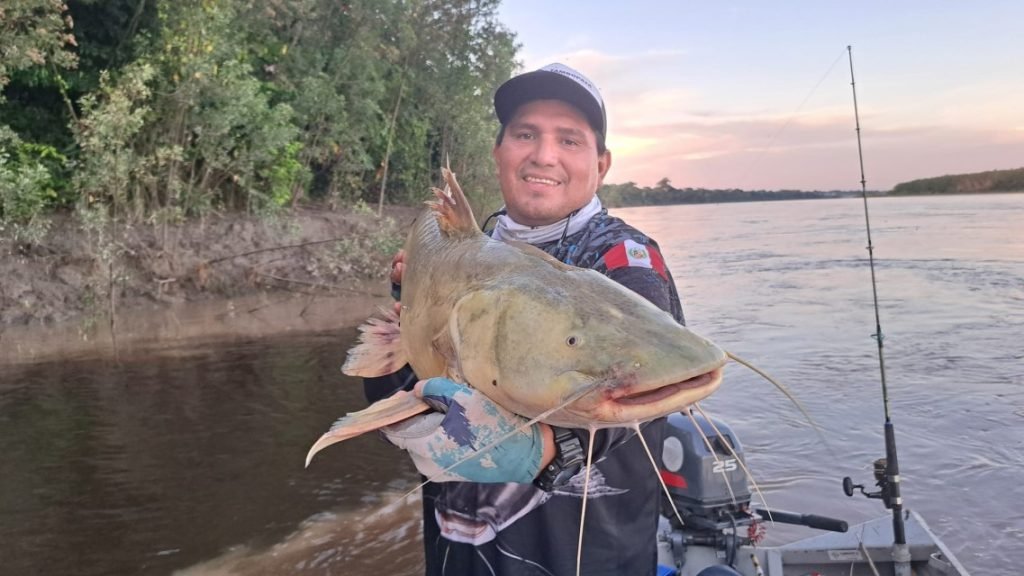Sport Fishing for Bagre (Pimelodus blochil) in the Tambopata River: Adventure in the Amazon Rainforest
Embark on a fishing adventure like no other in the heart of the Peruvian Amazon. Face the mighty Bagre (Pimelodus blochil) on the Tambopata River and discover the thrill of jungle sport fishing.
Are you passionate about fishing? Are you seduced by the idea of exploring the Peruvian Amazon and challenging one of the most combative fish in the region? Then sport fishing for Bagre (Pimelodus blochil) on the Tambopata River is the perfect adventure for you.
Immerse yourself in an unforgettable journey where adrenaline, nature and culture merge in a unique experience.

The Bagre (Pimelodus blochil): A Giant of the Jungle
Bagre (Pimelodus blochil) is a freshwater fish in the family Pimelodidae. It is found in the Amazon basins of Peru, Bolivia, Brazil, Colombia, and Ecuador. Famous for its size and strength, this fish is a coveted trophy for sport anglers.
Characteristics:
- Size: It can reach up to 2 meters in length and weigh more than 100kg.
- Coloration: Grayish with dark spots on the body.
- Diet: Carnivorous, it feeds on fish, crustaceans and invertebrates.
Habitat: Prefers deep water with logs and vegetation.

The Tambopata River: An Lush Ecosystem
The Tambopata River, located in the Tambopata National Reserve, Madre de Dios, Peru, is a tributary of the Madre de Dios River. Its crystal clear waters are home to a wide variety of fish, including bagre.
This river offers an incomparable setting for sport fishing:
- Unspoiled landscapes: Surrounded by lush vegetation and diverse wildlife.
- Abundance of fish: Species such as the Dorado, the Payara and the Tucunaré also inhabit the river.
- Adventure and challenge: Bagre fishing requires technique, patience and strength.
Equipment and Techniques for Catching Bagre
To fish for bagre in the Tambopata River, you’ll need:
- Fishing rod: Resistant, medium-heavy action, with a length between 2.5 and 3 meters.
- Reel: Baitcasting or spinning, with capacity for 100 meters of 30-50 pound line.
- Line: Monofilament or high-strength multifilament.
- Hooks: Sturdy, size 4/0 to 8/0.
- Plumb bobs: Heavy, between 50 and 100 grams.
- Bait: Live bait such as small fish, earthworms, or shrimp.
Fishing Techniques:
- Spinning: Versatile technique to cover different areas of the river.
- Baitcasting: Allows greater precision in casts and control of the fish.
- Trolling: Ideal for exploring large expanses of river.
Fishing Guides: Jungle Experts
For a safe and successful experience, we recommend hiring a local fishing guide. The guides know the river, fishing techniques, and the best places to find Bagre.
Benefits of a guide:
- Safety: They will guide you along the river and help you avoid dangers.
- Knowledge: They will teach you the most effective fishing techniques.
Logistics: They will take care of the organization of the trip and the equipment.

Frequently asked questions
What is Bagre (Pimelodus blochil)?
It is a freshwater fish of large size and strength, known for its sporting value.
Where is the Tambopata River located?
The Tambopata River, a tributary of the Madre de Dios River, is located in the Tambopata National Reserve, in the Madre de Dios region of Peru. This reserve is home to unparalleled biodiversity, being a paradise for nature and fishing lovers.
How to get to the Tambopata River?
The most common way is to get to Puerto Maldonado, the capital of Madre de Dios, and then take a land or river transport to the Tambopata River.
What kind of fishing is practiced on the Tambopata River?
Sport fishing is mainly practiced with rod and reel.
How much does a fishing trip to the Tambopata River cost?
The cost varies depending on the length of the trip, the type of accommodation, and the services included. Prices can range from $1000 to $5000 USD.
How hard is it to catch a Bagre (Pimelodus blochil)?
It is a strong and feisty fish, so it requires technique, patience and strength to catch it.
How big can a Bagre (Pimelodus blochil) get?
It can reach up to 2 meters in length and weigh more than 100 kg.
What techniques are used to catch a Bagre (Pimelodus blochil)?
The most common techniques are spinning, baitcasting, and trolling.
What type of bait is used to catch a Bagre (Pimelodus blochil)?
Live bait such as small fish or worms is used.
Do I need a guide to fish for a Bagre (Pimelodus blochil)?
We don’t require it, but we recommend it for a safe and successful experience.
Is it safe to travel to the Peruvian Amazon?
Yes, it is safe to travel to the Peruvian Amazon with proper precautionary measures.
What should I bring on a trip to the Peruvian Amazon?
Comfortable and cool clothing, mosquito repellent, sunscreen, hat, waterproof boots and personal hygiene items.
Book your Tambopata River Fishing Adventure
Don’t miss the opportunity to live an unforgettable experience in the Peruvian Amazon. Contact a tour operator specialized in sport fishing and book your trip to the Tambopata River.
Face the mighty Bagre (Pimelodus blochil), enjoy the beauty of the jungle and discover the thrill of fishing in one of the most biodiverse places on the planet.Embark on your adventure today!





